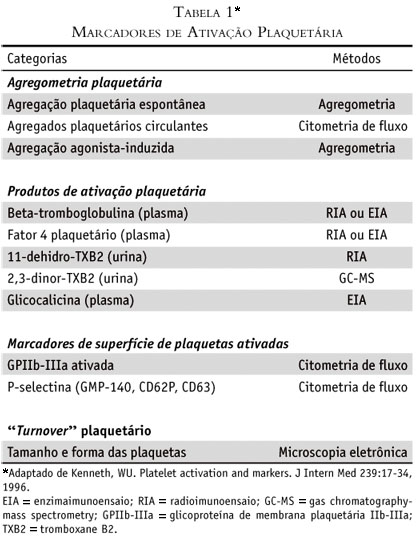Systemic sclerosis (SSc) is a multisystemic disease characterized by microangiopathy, exuberant fibroblast activity and immunologic abnormalities. The microangiopathic aspect is responsible for the most severe and life-threatening features of the disease. The interaction between endothelium and platelets plays an important role in the pathophysiology of SSc. Evidence of platelet activation in SSc includes high plasma levels of platelet-derived substances (Von Willenbrand factor, platelet factor 4, thromboxane A2, and ß-thromboglobulin), circulating platelet aggregates, ultra structural abnormalities in platelets, and the presence of platelets adhered to the endothelium. This review addresses the principles and possible pitfalls of the main methods for evaluation of platelet activation and function. The assessment of the ability of platelet aggregation is performed with and without the addition of agonists (adenosine diphosphate, collagen, adrenaline). Platelet activation may be assessed by two ways: by measurement of plasma concentration of substances that are released as the platelets are activated (e.g., thromboxane, platelet factor 4) and by the measurement of membrane expression of molecules that are transported to the platelet membrane during the activation process (e.g., GMP-140, glycoprotein IIb/IIIa). A recent contribution to this field was the demonstration that neuron-specific enolase (NSE) is released from the platelets into the blood in patients with active SSc. NSE, which is readily available in clinical laboratories with emphasis in tumor markers, may become a useful platelet activation marker in a series of clinical conditions.
systemic sclerosis; platelet aggregation; platelet activation

